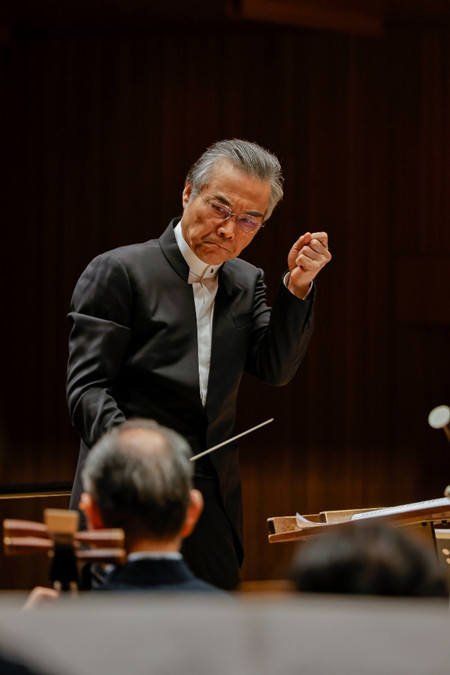

A total of five pieces were featured in the concerts: the Performance of "Essence", which is also called the sixth movement of Ji by Ng Cheuk-yin; Chan Ming-chi's Jing•Qi•Shen, an UNESCO-award winner; the Concerto for Pipa: A Fantasy of Flying Apsaras by Kong Zhixuan; the Silk Road Fantasia Suite and the Northwest Suite.
Among the pieces, the Pipa concerto drew its inspirations from apsara images on the Mogao Grotto murals, which feature Gandhara holding various kinds of musical instruments - pipa, zheng, dizi, sheng and bili etc, with the suggestion of playing in ensemble. "Among these images, 'playing the pipa on the back' is the most famous for its artistic impact, and it touches me the most," Kong, its composer said, adding that "The music draws its material from Dunhuang pipa scores and it is based on the structure of the Tang Dynasty daqu ('grand song'), and blends in musical elements from Central Asia."
The Northwest Suite by Tan Dun is a Chinese orchestral piece, which uses the musical elements of the indigenous music of the Loess Plateau in northwestern China. Between the sonorous, robust and full-bodied musical phrases is a pained wistfulness that comes from living in the arid, punishing conditions of the land. The composer captured this complexity in his music through touching melodies and vivid tone colors, describing the humanism, the pains and the joys of the people living on this land through four sections: God in Heaven Grants Us Sweet Rain, Rousing Games in the Bridal Chamber, I Miss My Dear Love and Stone-slab Waist Drums.
Inspired by travelogue drawings, composer Zhao Jiping's "Silk Road Fantasia Suite" featured Japanese saxophone player Miho Sumiya. With Conductor Yan's adept direction of the group, the music had a cinematic quality, starting off with a subtle impressionistic vibe. Sumiya's skillful handling of the saxophone gave it a soulful and melancholic tone, while her sensuous vibrato added to its expressiveness. The suite's middle portion felt like an opera recitative, with the zheng's enchanting accompaniment complementing Sumiya's performance.
"By striking both its similarities to and differences from Japanese music, we want to use traditional Chinese string, wind and percussion instruments to create a sense of familiarity and novelty for our Japanese audiences," Yan said.